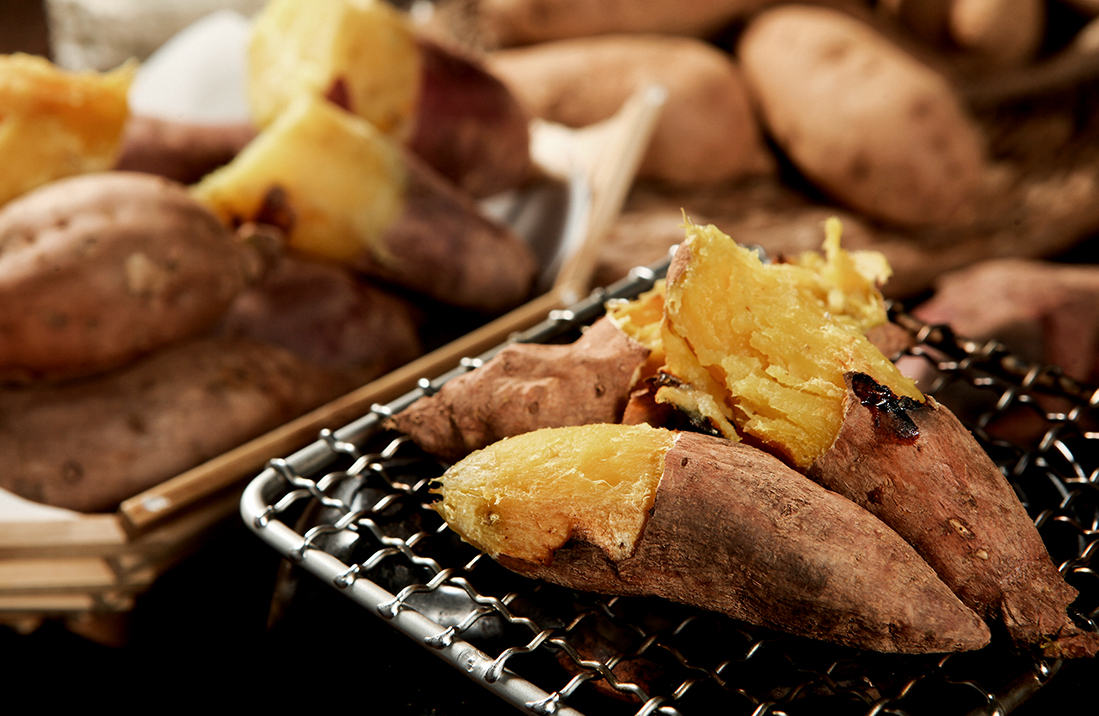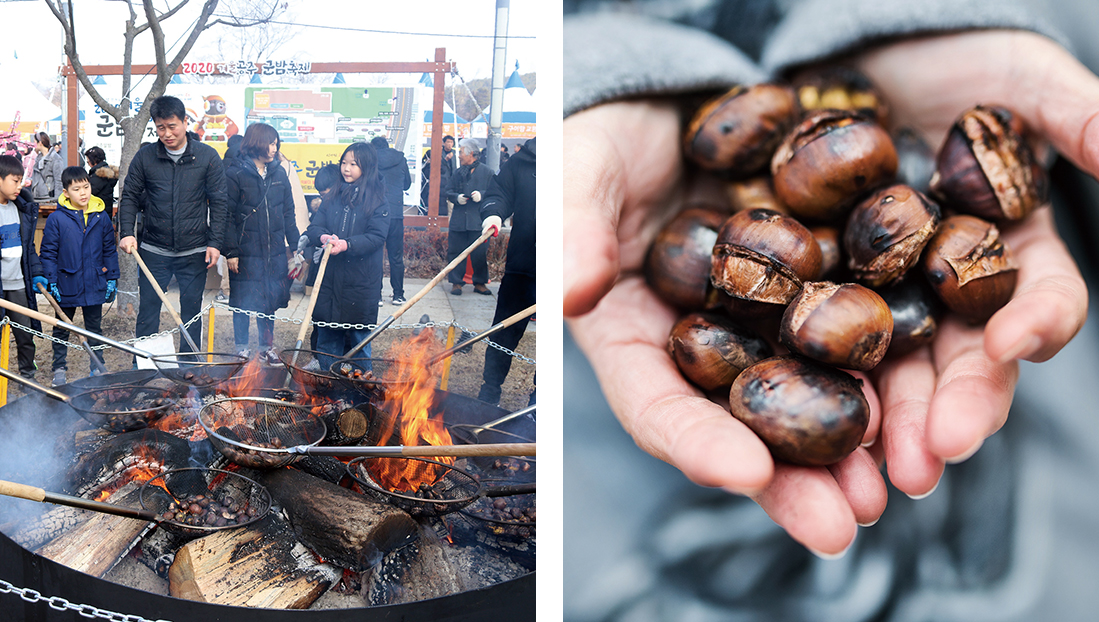Flavor
Warmth & Sweetness
Roasted Chestnuts & Sweet Potatoes
The colder it gets in Korea, the more people crave roasted sweet potatoes and chestnuts. When the professional polling agency RealMeter did a survey in November 2017 on the favorite winter snacks of adults, around a fourth picked roasted chestnuts and sweet potatoes. Read more to find out why.
Written by • Kim Samuel
Since Korea has four seasons, wintertime means enduring frosty temperatures and thus higher demand for warmth whether in setting, food or affectionate gestures. The traditional Korean song “Chestnut Ballad” reflects this sentiment:
The wind is blowing / blowing at the Yeonpyeong Sea / It’s breezing money / (Chorus) Hurray for roasted chestnuts
At rituals commemorating ancestors, chestnuts are served to symbolize abundance. In line with this spirit is the term “breezing money,” a chant that describes how a fisherman is delighted by his bountiful catch. Back in the days, chestnut merchants roamed chilly streets humming this ballad and awaiting the warmth of spring while roasting and snacking on chestnuts.
Roasted chestnuts have a rich legacy in Korean history. A folk song from the Goryeo period, “Jeongseokga,” includes the following lyrics: “I will plant chestnuts in the most brittle, unyielding piece of land and part ways with my lover if the chestnut bears fruit.” Even “Chestnut Ballad” employs romantic descriptions, implying a natural connection between the sweet flavors of chestnuts and the doting sentiments of lovers.

© gettyimageskorea
Since old times, chestnuts have been eaten raw or steamed with rice. On the first full moon of the lunar year, I chewed on raw chestnuts hoping for its nutrients to bestow finer skin. Between drinks, it was a hearty snack to munch on. The vitamin C in chestnuts enabled my body to promptly break down alcohol while granting my skin the suppleness it yearned for. Discarding its outsides into the fire and roasting the insides are another way to enjoy this nutritious snack.
Samgukji (Records of the Three Kingdoms), compiled during the Qin Dynasty of China, says “a chestnut as thick as a pear runs across Mahan (the former land of the Baekje Kingdom).” Gongju, Chungcheongnam-do Province, once Baekje’s capital, has long been famous for its chestnuts. A chestnut festival lights up the city every winter featuring the direct roasting of chestnuts in large furnaces. Underneath the blackened chestnut crusts is chestnut’s fragrant surface that whets the appetite.
Roasted Sweet Potatoes

The insides of well-roasted sweet potatoes are soft and golden. © imagetoday / Department and convenience stores now sell roasted sweet potatoes. © Yonhap News
Steaming sweet potatoes is another popular winter snack in Korea. The saccharine sweetness of the vegetable is due to the heat-induced morph of starch into sugar. The ideal temperature to maximize sweetness is 60 degrees Celsius. Sweet potatoes used to be tossed into a burning pile of dried leaves or coals left from campfires. Besides ensuring that embers didn’t spark off dangerously and start a fire, waiting for sweet potatoes to roast was a pleasantly idle activity.
Today, the sweet potato is increasingly popular for its low calories and bountiful nutrients. Heating it up requires neither more ingredients nor tools besides an oven. Further simplifying the easy preparation process, even pots specifically designed for roasting sweet potatoes were introduced. Pumpkin sweet potatoes are moister and thus better for consumption than chestnut sweet potatoes. To make up for sweet potatoes’ dryness, milk or over-fermented kimchi are popular complements.
Though modern technology has come up with stone-plated ovens, sweet potato merchants until the late 20th century refashioned used steel containers into transportation devices. After drilling holes in the cylindrical body, they mounted a container on a wheeled pedestal for mobility. Nowadays, these merchants are a rarity. Despite bountiful harvests, the stagnancy of sweet potato production has raised ingredient costs. Now that convenience stores even sell roasted sweet potatoes, neither buyers nor sellers feel the need to take to the streets. Transactions that once occurred through fleeting merchant encounters are now available all day and every day at convenience stores.
According to data from the convenience store chain CU, sales of roasted sweet potatoes have surpassed that of steamed buns. This led CU to drastically increase its number of branches selling roasted sweet potatoes from 300 in 2017 to more than 2,000 near the end of last year. Similar patterns have emerged among other convenience store chains. Despite this, roasted sweet potatoes have yet to disappear from street stalls and instead have undergone transformation. For instance, electric roasting methods have replaced firewood and sweet potatoes are often served with syrupy toppings or cheesy condiments.

Visitors at the Gongju Chestnut Festival gather around a fire to roast chestnuts. © Yonhap News / Peeling off the burnt skin of roasted chestnuts is a seasonal ritual. © shutterstock





















